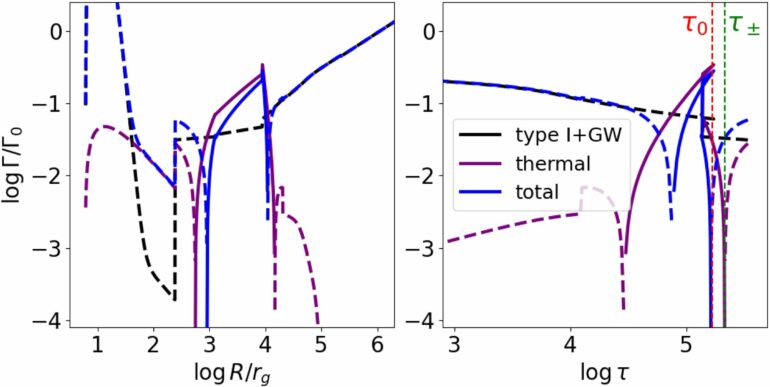An international study, led by researchers from Monash University, has revealed crucial insights into black hole dynamics within massive disks at the centers of galaxies.
Published in the Monthly Notices of the Royal Astronomical Society, the study shows the intricate processes governing when and where black holes slow down and interact with each other, potentially leading to mergers.
The study’s findings shed light on the gravitational-wave (GW) emissions resulting from the merger of black holes, events detectable by instruments such as the Laser Interferometer Gravitational-Wave Observatory (LIGO).
When two black holes come too close, they disturb space-time itself, emitting gravitational waves before eventually merging into one.
Dr. Evgeni Grishin, a postdoctoral research fellow from Monash University School of Physics and Astronomy who led the study, likened the phenomenon to a busy intersection without functioning traffic lights.
“We looked at how many and where we’d have these busy intersections,” Dr. Grishin said.
The research focused on the centers of galaxies, where black holes can merge multiple times due to the massive gravitational pull of the supermassive black hole at the core.
Additionally, the presence of a massive accretion disk of gas contributes to the brightness of these galaxies, classifying them as active galactic nuclei (AGN).
The interaction between smaller black holes and the surrounding gas causes them to migrate within the disk, accumulating in regions known as migration traps. These traps increase the likelihood of close encounters between black holes, potentially leading to mergers.
“Thermal effects play a crucial role in this process, influencing the location and stability of migration traps, Dr. Grishin said. “One implication is that we don’t see migration traps occurring in active galaxies with large luminosity.”
The study’s findings advance our understanding of black hole mergers and also have broader implications for gravitational wave astronomy, high-energy astrophysics, galaxy evolution, and AGN feedback.
“Despite these significant findings, much about the physics of black holes and their surrounding environments remains unknown,” Dr. Grishin said. “We’re thrilled with the results, and we now are one step closer to discovering where and how black holes merge in galactic nuclei.
“The future of gravitational wave astronomy and active galactic nuclei research is exceptionally promising.”
More information:
Evgeni Grishin et al, The effect of thermal torques on AGN disc migration traps and gravitational wave populations, Monthly Notices of the Royal Astronomical Society (2024). DOI: 10.1093/mnras/stae828
Citation:
Black hole ‘traffic jams’ discovered in galactic centers by astronomers (2024, April 24)
